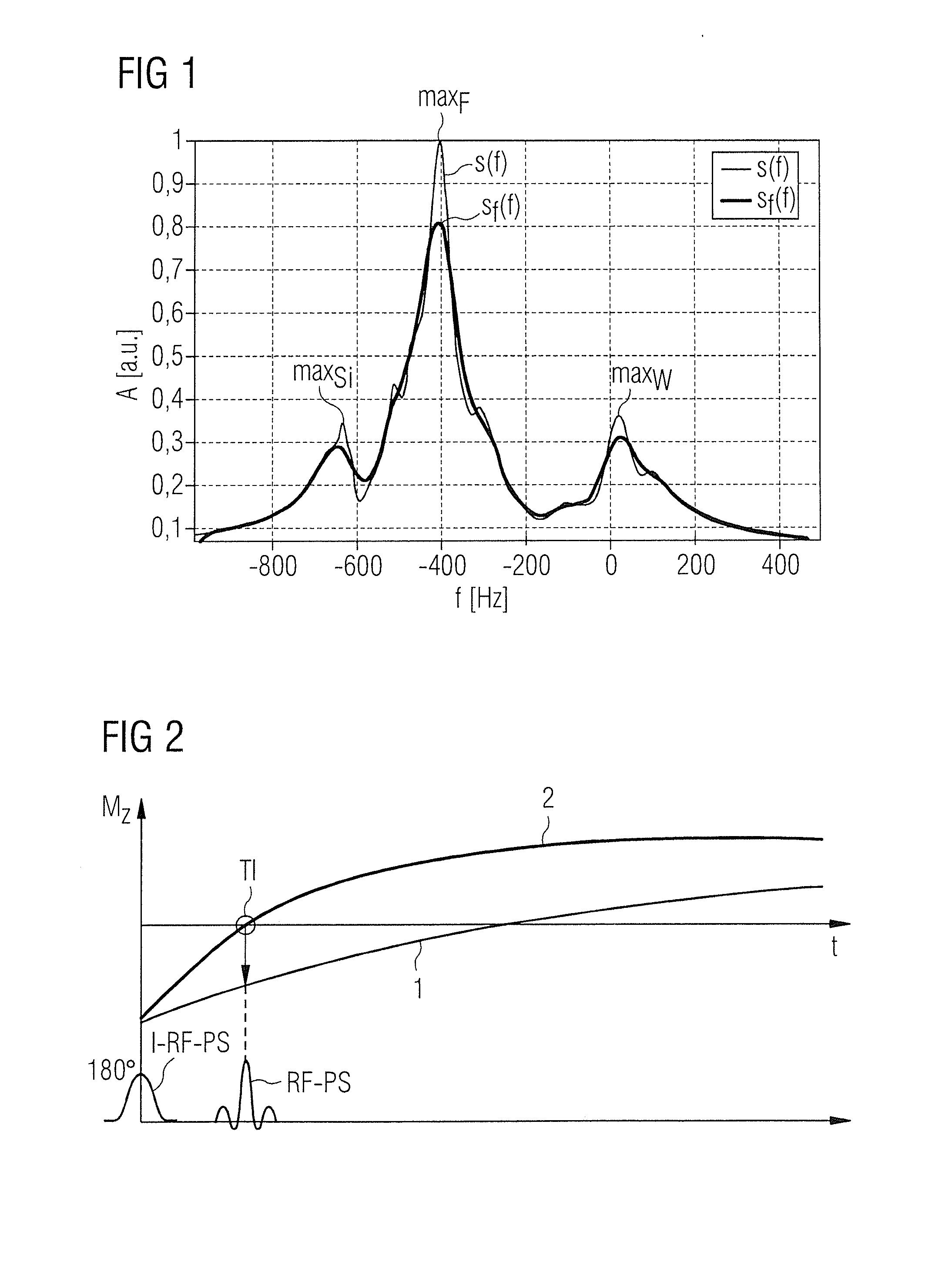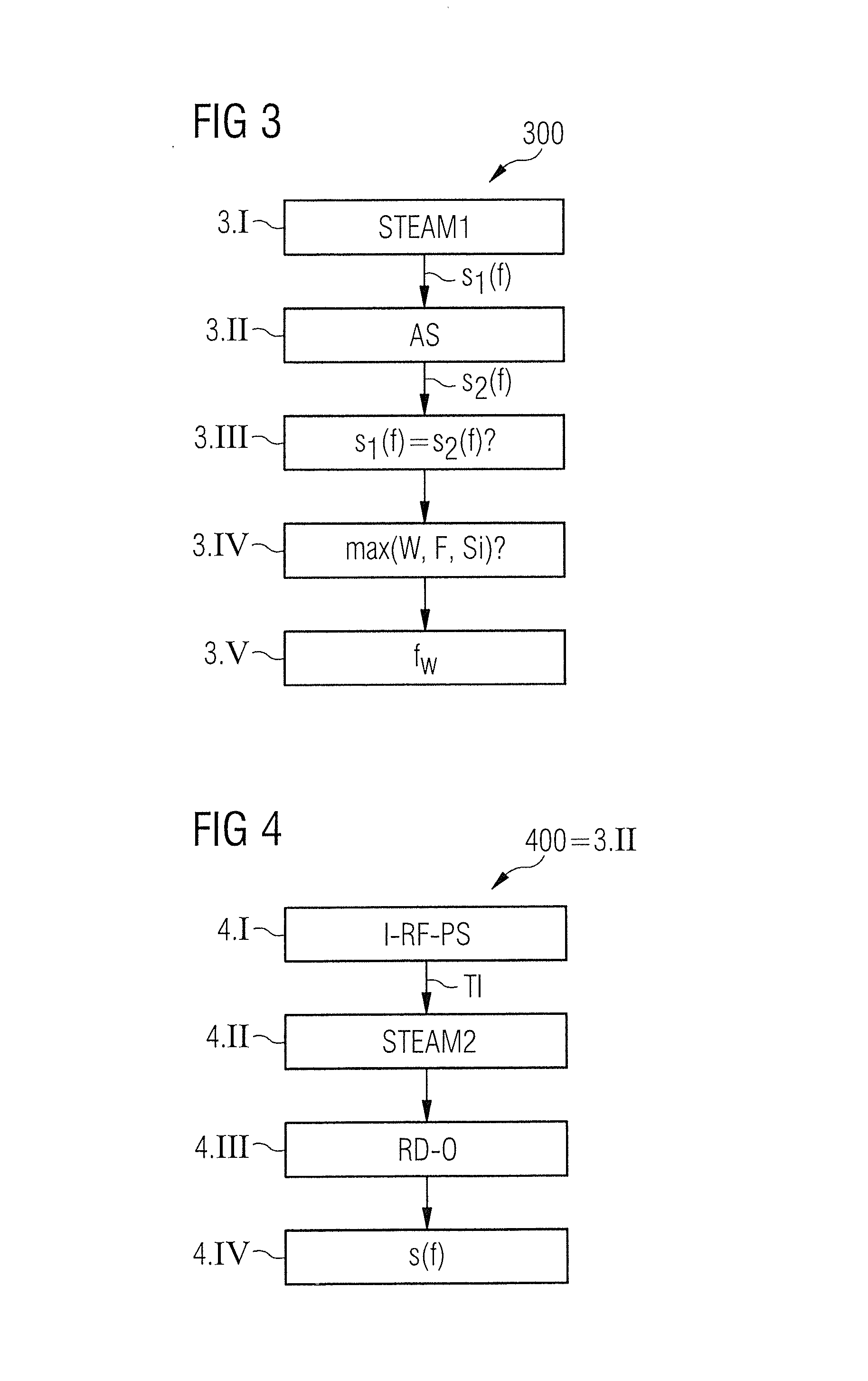Method and device for frequency adjustment of a magnetic resonance imaging apparatus using an inversion pulse
a magnetic resonance imaging and frequency adjustment technology, applied in the direction of magnetic measurement, instruments, measurements using nmr, etc., can solve the problems of difficult automatic detection of silicone, inability to accurately determine the system frequency based on the previously scanned frequency spectrum, and further hinder the correct allocation of maxima in this conventional method, so as to achieve less time-consuming and reliable
- Summary
- Abstract
- Description
- Claims
- Application Information
AI Technical Summary
Benefits of technology
Problems solved by technology
Method used
Image
Examples
Embodiment Construction
[0045]FIG. 1 shows a frequency spectrum s(f) with three maxima. The amplitude A of the frequency spectrum s(f) is plotted in arbitrary units a.u. against the frequency f or the deviation of the frequency from the system frequency fw. In order to acquire the frequency spectrum, in a magnetic resonance system (see FIG. 6), a so-called STEAM sequence is generated and herein stimulated magnetic resonance signals, also called echo signals, are read out. The frequency spectrum s(f) is typically obtained by summing individual spectral curves which are each determined on the basis of signals from individual channels of the antenna system of the magnetic resonance system. Typically, on the basis of the acquired overall frequency spectrum s(f), a filtered frequency spectrum sf(f) is generated wherein a typical filter width of the filter with which the filtered frequency spectrum sf(f) was generated is, for example, 1 ppm. The filtered frequency spectrum sf(f) is taken as the basis for the fur...
PUM
 Login to View More
Login to View More Abstract
Description
Claims
Application Information
 Login to View More
Login to View More - R&D
- Intellectual Property
- Life Sciences
- Materials
- Tech Scout
- Unparalleled Data Quality
- Higher Quality Content
- 60% Fewer Hallucinations
Browse by: Latest US Patents, China's latest patents, Technical Efficacy Thesaurus, Application Domain, Technology Topic, Popular Technical Reports.
© 2025 PatSnap. All rights reserved.Legal|Privacy policy|Modern Slavery Act Transparency Statement|Sitemap|About US| Contact US: help@patsnap.com



